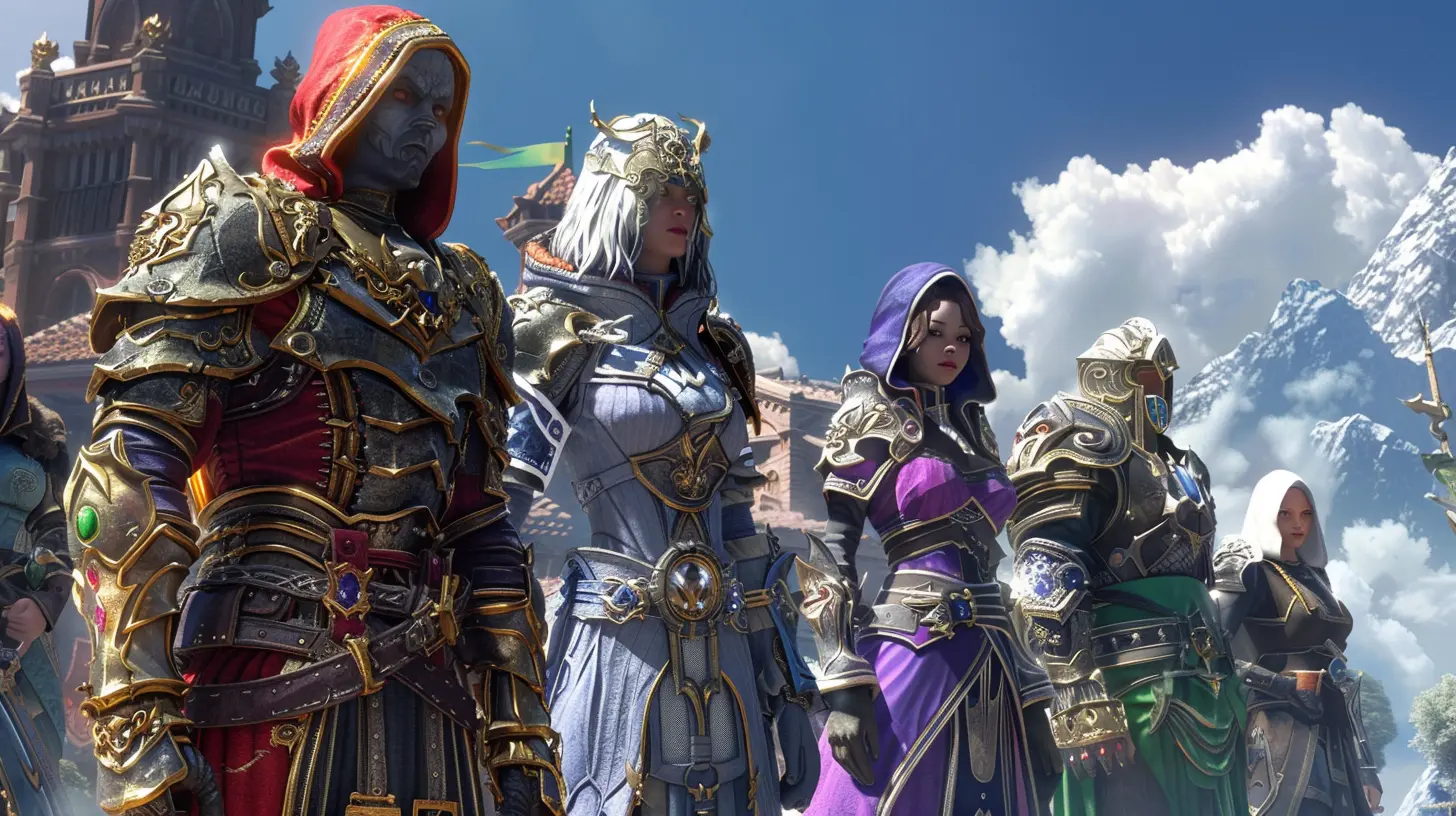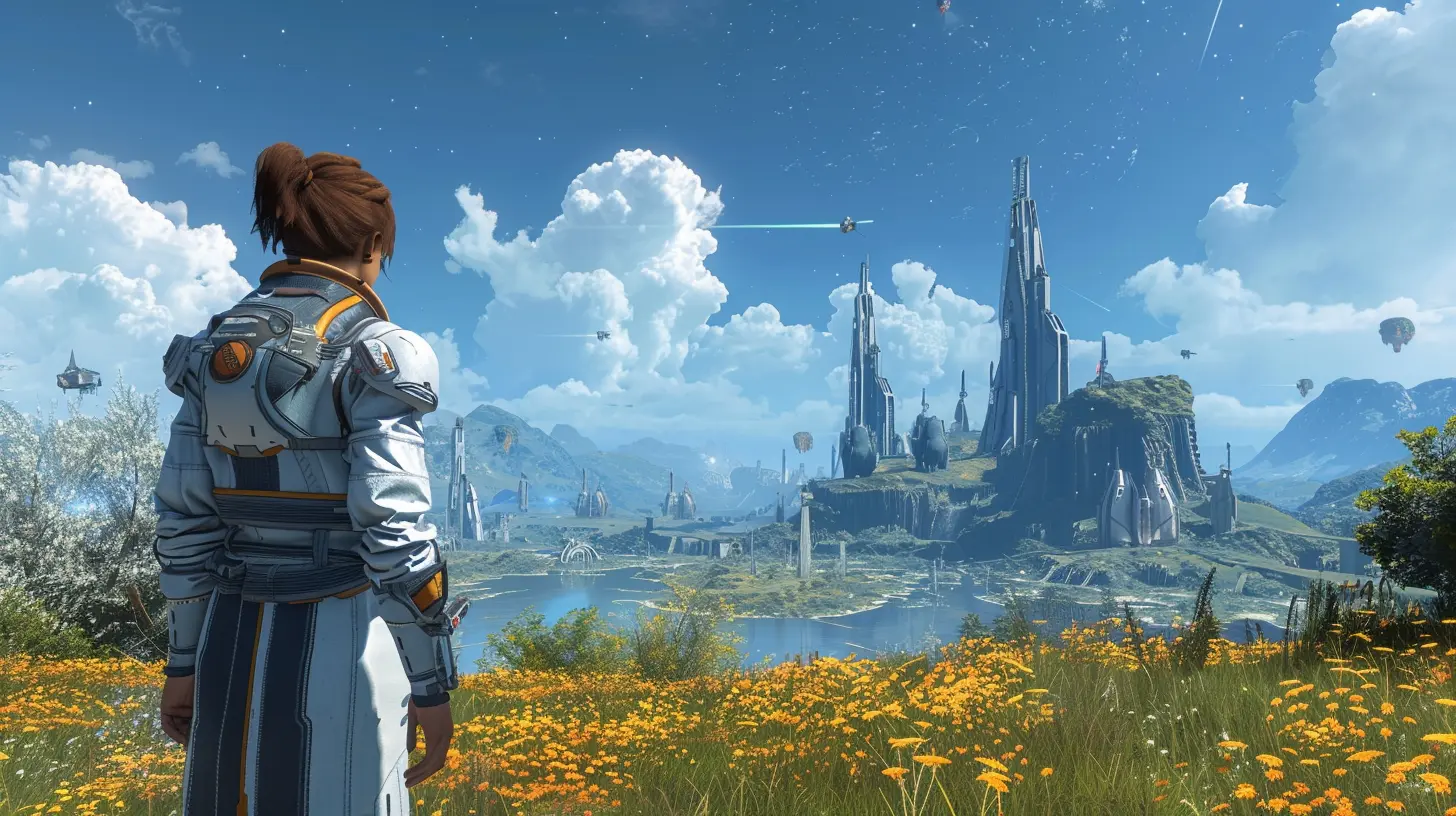The Pros and Cons of Free-to-Play Models in MMOs
3 July 2025
Ever jumped into a new MMO just because it was free? Of course, you have. We've all done it. There’s something thrilling about diving headfirst into a vast virtual world without dropping a single dime. But let’s be real — free-to-play (F2P) MMOs are kind of like a “free” buffet. Sure, there’s no entrance fee... but that doesn’t mean you’re not gonna pay in other ways.
Today, we’re putting the infamous F2P model under the microscope. We're going to break down the good, the bad, and the downright ugly of this trend that’s taken the gaming world by storm.
What Exactly Is a Free-to-Play MMO?
Let’s start with the basics. A free-to-play MMO is exactly what it sounds like — an online multiplayer game that you can play without paying an upfront cost. These games let you download, create a character, and start exploring without reaching for your wallet. But they’re not charities. These devs still need to make money — and oh boy, do they know how to do it.Instead of charging upfront, they rely on in-game purchases, microtransactions, premium currency, cosmetics, battle passes, and sometimes even gacha mechanics to monetize. If you’ve ever spent $5 on a shiny mount or flashy outfit… yeah, you’ve funded the model.
With that out of the way, let’s talk about the juicy stuff — the pros and cons.
The Sweet Side: Pros of Free-to-Play Models in MMOs
1. Zero Investment, Maximum Curiosity
Free is a powerful word. It removes the biggest barrier to entry — money. Wanna try a new MMO but not sure if you'll vibe with it? No prob. Just download and go. No worrying about refunds, no commitment. It's like a first date with no expectations.This model opens the door to literally everyone — students, broke gamers, or even skeptical veterans. You don't need to fork over $60 just to figure out you don't like elf ears and potion brewing.
2. Massive Player Base = Buzzing Worlds
More players = more fun. MMOs thrive on population. The more people running around, the more alive the world feels. F2P models attract boatloads of players, especially during launch — and that helps create dynamic, exciting in-game communities.Games like Genshin Impact, Warframe, and Guild Wars 2 have used this model to capture huge global audiences. And for players, that means busy servers, active guilds, and 24/7 action.
3. Try Before You Buy
Let’s be honest — not all MMOs are made equal. Some are grind-heavy, others are heavy on PvP, and some just plain suck. Free-to-play gives you the chance to test the waters before going all-in.If you actually like what you see, you can consider supporting the devs later. It’s like getting a demo… except you can often play for hundreds of hours before ever feeling pressure to spend.
4. Frequent Updates and Events
F2P MMOs rely on keeping players engaged long-term. That means frequent content drops, seasonal events, and constantly evolving gameplay. Developers know they need to keep things fresh or risk losing players to the next shiny new MMO on the block.Games like Path of Exile are masters of this — reinventing themselves every season with game-changing mechanics and updates. And the best part? Most of it is free.
5. Low Risk, High Reward for Developers
From a dev perspective, F2P can be a goldmine. You get insane reach since there’s no paywall. And if your hook is strong enough (think addictive gameplay loop + flashy cosmetics), players will spend. Whales — the few big spenders — can bankroll entire communities.In short, it's a business model built for modern gaming attention spans. Drop in, get hooked, and start spending.
The Dark Side: Cons of Free-to-Play Models in MMOs
1. Pay-to-Win Shenanigans
Let’s not sugarcoat it. Pay-to-win (P2W) is the dumpster fire of the F2P world. Some MMOs take it too far — letting players straight-up buy power, gear, or stat boosts. That means skill gets tossed out the window when your opponent just maxed out with Daddy’s credit card.Suddenly, PvP becomes less about strategy and more about spending. That’s not fun. That’s just capitalism in fantasy armor.
2. The Dreaded Grind Wall
You’ll usually reach a point in F2P MMOs where progress slows to a crawl. Wanna unlock that epic sword? Cool, that'll be 50 hours of repetitive quests — or $9.99. These games are designed with pain points that nudge (or shove) you toward spending.It’s like walking on a treadmill with a $20 bill dangling in front of you. Players either grind like maniacs or cave and spend. It’s not a great look.
3. Aggressive Monetization Tactics
Pop-ups. Flash sales. Premium-only features. Gacha rolls. Loot boxes. FOMO-laced battle passes. F2P MMOs can feel more like digital malls than games sometimes. Everything is geared towards hooking your wallet, not your heart.Some games go full casino, using psychological tricks to get players spending. (Hey, even the button sound effects are carefully crafted dopamine hits.)
4. Fragmented Player Experience
In many F2P MMOs, there’s a noticeable divide between paying and non-paying players. Premium users may get faster XP rates, special mounts, better gear, and even entire zones locked behind paywalls.What’s the result? Two-tiered communities. That kills immersion and creates unhealthy in-game economies where gold means less than real money swipes.
5. Less Accountability from Developers
If you paid $60 for a game, you expect quality support, bug patches, and content. But in a F2P world, you're technically not a customer until you spend. That means less pressure on devs to fix core issues. They’re more focused on monetized content than balance or polishing systems.This can result in half-baked expansions, terrible customer service, and content that serves profit more than players.
The Hybrid Model: The Best of Both Worlds?
Some MMOs have found the sweet spot — a blend of free and premium. Games like Final Fantasy XIV offer a free trial with tons of content, then ask for a subscription if you want more. Others, like Guild Wars 2, let you play the base game for free, with expansions as one-time purchases.These hybrids often feel fairer and less predatory. You know what you're paying for, and the F2P portion acts less like a trap and more like a teaser. It’s like getting the appetizer for free and deciding if the entrée is worth it.
So, Are Free-to-Play MMOs Worth It?
Short answer — depends.If you're a casual player who likes to dabble and doesn't mind some grind, F2P MMOs can offer hundreds of hours of entertainment for zero cost. That’s a sweet deal.
But if you’re competitive, hate paywalls, or get annoyed by aggressive monetization, you might end up frustrated. Especially if you find your skills mean nothing next to someone who threw down $100 on loot boxes.
F2P MMOs are a mixed bag — they can be paradise or purgatory depending on the game’s ethics and your own tolerance for compromise.
Tips to Survive the F2P Jungle
- Do your research. Not all F2P games are created equal. Look for games that value player time and offer real progression without spending.- Avoid whales, unless you’re one. Stay away from highly competitive F2P MMOs unless you're willing to spend — or you're just playing for fun with no stakes.
- Watch your wallet. It’s shockingly easy to spend more on a F2P game than you would on a subscription model. Keep tabs on your microtransactions.
- Support fair developers. If you enjoy the game and the monetization model feels respectful, consider spending a little — especially if it helps the game grow.
Final Verdict: A Blessing and a Curse
The Free-to-Play model in MMOs is a double-edged sword. On one hand, it democratizes gaming, lets people join massive worlds without cash, and often leads to vibrant communities and frequent content.On the other hand, it’s a minefield of monetization landmines, predatory mechanics, and pay-to-win nonsense that can suck the soul out of what should be an epic fantasy adventure.
The key? Balance. And not just from the devs — from players too.
Treat your time like currency. If a game respects it, great. If not? Walk away. There’s always another (free) world to conquer.
all images in this post were generated using AI tools
Category:
Massively Multiplayer OnlineAuthor:

Francesca West
Discussion
rate this article
2 comments
Rachel Erickson
Great insights on free-to-play models! It's interesting how they balance accessibility with monetization. I appreciate the thoughtful discussion on both sides of the debate.
October 19, 2025 at 2:51 PM

Francesca West
Thank you for your feedback! I'm glad you found the discussion on free-to-play models thought-provoking. Balancing accessibility and monetization is indeed a crucial challenge.
Khloe Griffin
Free-to-play models in MMOs bring accessibility and a diverse community, fostering creativity and collaboration. While they have their challenges, the potential for innovation and engagement is limitless. Embrace the journey of exploration and connection that these games offer to players around the world!
July 10, 2025 at 2:28 PM

Francesca West
Thank you for highlighting the positives of free-to-play models! They indeed foster a vibrant community and encourage creativity, making gaming more accessible for everyone. Your enthusiasm for exploration and connection is inspiring!


